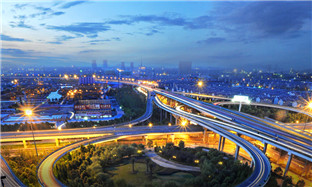Eight Advantageous Resources
5. Ecology
Zhejiang Province has relatively independent geographical units and location advantages, and the ecological system features abundant diversity with a variety of biological breeds. Its environmental supportive system is only next to that of Tibet and Hainan, ranking the third in the country. The terrain slopes down from the southwest mountainous area to the northeast plain in a step-like manner, and the topography and water system are self-contained. The eight grand water systems in Zhejiang Province basically originate from the province itself and the water environmental system is relatively independent; the river networks in the plain region are intensely spread and the water system is soundly developed; the holistic quality of water in the rivers and lakes is fine, and the water quality of most of the rivers meets or is better than Grade III of the environmental quality standard for surface water. The mountainous areas are densely distributed with vegetation covered in forests. The forest coverage is one of the highest in the nation, with the rate in southwest Zhejiang even higher. Currently, 16 natural reserves at national level and 83 forest parks at provincial level have been established in the whole province. Zhejiang Province is one of the provinces which have the largest number of forest parks in the nation.
Zhejiang is well-founded in terms of environmental protection and ecological construction. It is the fifth of the state-level ecological pilot regions. The overall quality of the ecological environment in the province is one of the best in the country. The tendencies of environmental contamination and ecological deterioration have been checked and the environmental quality has kept stable. Comprehensive management has resulted in improved residential environment in the cities and the countryside. Farmers living high up on the mountains or deep in the mountains were encouraged to move down.
Notable achievements have been made in developing an eco-friendly economy. Zhejiang took the early initiative in developing eco-friendly agriculture, eco-friendly industry and eco-friendly tourism and the favorable tendencies have sustained. The industry of green food and organic food such as tea, canned food, fresh fruit, grain, oils and etc. keeps developing by leaps and bounds. The eco-friendly industry, especially the environmental protection sector, has had rapid development. A batch of production-study-research bases and bases of specialty industries have been developed as a priority. Capitalizing on the rich resources of a beautiful landscape, a long history and rich cultural heritage in Zhejiang, the eco-friendly tourism in our province is booming, making Zhejiang an important tourist destination.
6. Mountains & Seas
Zhejiang is a small terrestrial province but a large maritime one. The ocean area of 260,000 square kilometers is 2.6 times that of the land area; the 3061 islands account for 2/5 of the total number of islands in the country. The coastline and the islands' shoreline, totaling 6500 kilometers, rank the first in China, among which 333 kilometers are precious deep-water shoreline over ten meters in depth, providing rich resources of "harbor, fishery, scenery, oil and gas". In Zhejiang, shorelines suitable for over 10-thousand-ton deep-water berths, where 100 deep-water berths of 100-thousand-ton can be built, account for 1/3 of the total in the country, ranking the first in China.
Zhejiang is geographically known as "70% of mountains, 10% of water and 20% of land". The mountainous areas account for 70.4% of its total terrestrial areas. Due to historical reasons, the mountainous areas are relatively less developed in our province. However, the backwardness of less developed areas can be converted into advantages by expanding regional cooperation in exploiting mountain and ocean resources, combininig the economic advantages in developed areas with its own resource advantages, and by developing themselves into the largest production base for green agricultural products and base for tourism, sightseeing and recreational agriculture. Advantages of the abundance of labor force and low costs will be fully exploited to boost the development level of the specialty agriculture and develop a batch of leading agricultural enterprises.

 Print
Print Mail
Mail
 6th World Internet Conference
6th World Internet Conference Why Zhejiang
Why Zhejiang Yongkang, a city famous for hardware
Yongkang, a city famous for hardware Zhejiang Release
Zhejiang Release Zhejiang News
Zhejiang News